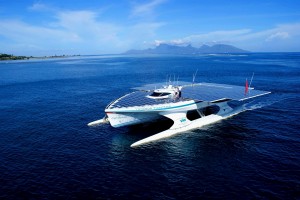Solar electricity is moving ever closer to grid parity, meaning the cost is comparable to existing grid supplies (coal, gas, etc). This is a pretty significant milestone, as politics have failed (and will continue to do so) in substantially reducing CO2 emissions…but if solar becomes less expensive than fossil fuel electricity, market forces will take over where governments have failed. A project in Spain recently achieved grid parity with a group of fourteen rooftop solar panel arrays, and in the US, a project by First Solar is producing at less cost than coal. I think we’re moving into a new electricity marketplace, where people are going to start asking why we’re not looking at solar to cut costs, rather than asking why we should pay *more* for solar, as has been the case in past years. I wouldn’t expect your utility bill to decrease though, as the gradual decommissioning of fossil fuel plants is not going to be cheap. But, a big win for the environment – if we can move quickly enough on this.
Also in solar energy news, the world’s largest solar thermal plant, being built in California, recently passed a big test proving that it’s ready to enter commercial service. Solar thermal technology is significant as the thermal energy it collects can be stored to provide energy when there’s a shortage of sunlight (cloudy days, or at night).



